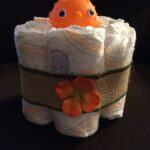*Originally published October 20, 2021
 Whoa!
Whoa!
Man!
I’m exhausted!
I just got done dealing with yet another toddler tantrum!
Knowing just how to deal with a toddler’s tantrums is not easy!
I like to compare my little toddler to a koala bear.
Why?
Because koala bears are absolutely adorable!
But!
Look out!
They have an angry side and when that comes out, it is not pretty!
You can read more about koalas and their hot temper here!
My Little Koala
 My daughter, Belle, is 20 months and…dang!
My daughter, Belle, is 20 months and…dang!
She is definitely getting stronger!
She fought me, tooth and nail, because she was finished eating her dinner, but then she wasn’t.
And then she was, and then she wasn’t.
She couldn’t decide if she was done eating her fruit or not. 
She signed “all done” (because, if you are not aware, she is not talking, so I have been teaching her sign language), but when I took her tray away, she screamed and pointed to the food again. So, I would put the tray back. Then, she signed “all done” again. So, I took the tray away. Then, she screamed and pointed to the food again.
“What do you want, Belle? Are you done or not?” I said, getting easily frustrated by the back and forth and her screaming.
She could not seem to make up her mind, so I finally removed her from her high chair and took her into the bedroom, where I changed her diaper and put a clean onesie on her.
 Belle screamed, kicked and hit me throughout the entire process!
Belle screamed, kicked and hit me throughout the entire process!
She was utterly in disarray, as I quickly did my best to get that diaper and onesie on!
I said nothing.
I just let her scream and I worked in a highly efficient manner.
Then, I put her in the crib and walked out of the room.
Done.
The Results of All of That!
 Belle sat in the crib and screamed for a solid 10 minutes!
Belle sat in the crib and screamed for a solid 10 minutes!
And then…
Bam!
Just like that….
She was out for a long, overdue nap!
Amen!
With her 2-year-old molars coming in, I have been having to deal with a whole lot more of these fun and fabulous (sarcastic) major meltdowns.
Every parents’ dream!
(Sarcastic tone, again!) 
What helps to keep me calm and cool through it all is my educational background and training in counseling and behavior.
Of course, even though I have this type of background doesn’t mean I end up handling every situation like a champ.
I have my days, too, believe me!
Anyways, I thought that maybe I would share a few tips with you, just in case you are trying to figure out how to deal with such agonizing and annoying toddler meltdowns!
I hope that this helps!
1. Ask Yourself if it is One of the Following Five:
 The minute that a meltdown starts and before you do anything, ask yourself the following question:
The minute that a meltdown starts and before you do anything, ask yourself the following question:
Is my child….
Hungry?
Thirsty?
Uncomfortable?
Tired?
Sick? 
Stop and think about this for a minute.
There may be an underlying trigger to the temper tantrum in the first place and it may be one of these five.
If so, you know a little bit of the reasoning behind it, even though that may not be the full story.
Belle’s Bottom Line Problem
 In my example above, I knew that Belle was tired. She hadn’t had a nap all day and it was getting to be late.
In my example above, I knew that Belle was tired. She hadn’t had a nap all day and it was getting to be late.
I knew that she wasn’t hungry or thirsty because she had just eaten/drank her juice.
I was pretty certain that she wasn’t sick.
She could have been uncomfortable because her diaper was wet, but I knew that the more likely answer was that she was tired.
Once you realize if it could be one of the top five issues, then you may find yourself being a little more understanding towards your child.
What gets frustrating to a parent is when they do not know why the meltdown is happening. 
Having this simple realization, as to whether or not your child may simply be hungry or overtired, helps you to stay a little calmer in the moment.
Plus, you know the underlying reasoning behind the meltdown and that makes the resolution that much easier.
So, practice mindful stopping and thinking as soon as a meltdown starts to come on.
It helps!
2. Remove Your Child From the Situation
 If you can (sometimes you can’t), remove your child from the situation.
If you can (sometimes you can’t), remove your child from the situation.
Often times, a new space can help to alleviate some of the distress.
Especially at this age, toddlers are quick to forget what they were upset about in the first place by the time the meltdown is over, and a new space may help to foster that.
If you are trying to teach your child to ask for an item that he wanted from the kitchen, take him back there after he has settled down and immediately give him the words to ask for it so that the request is fast and easy for your child. This should prevent another meltdown.
In my own example above, I removed Belle from her highchair and took her to the bedroom.
This way, she wasn’t stuck in the same “hole” where the meltdown began. 
By removing her, I took her out of the situation and gave her a new space to recover in.
Do not feel as though you even have to take your toddler to a whole ‘nother room.
A simple 3 feet, even, across the current room that they are in, may help.
3. Say Little, Say Nothing
 When your child is in that screaming/crying/kicking/hitting episode, nothing you say is going to make it better.
When your child is in that screaming/crying/kicking/hitting episode, nothing you say is going to make it better.
Not typically, anyway.
The best thing that you can do is to just stay quiet.
Let the meltdown happen.
But, start thinking about the next steps afterwards.
When Belle had her meltdown, she still needed care, so I followed through with changing her diaper and getting her dressed.
I let her know what we were doing in a very firm, calm, nonchalant manner.
This is when you have to put on your super cool parent shades and strut down the street like nothing is bothering ya.
“You need your diaper changed and a shirt on, Belle.” 
That was all that I said.
It was just enough to let her know what was about to occur, but without overstating anything.
Again, she more than likely didn’t even hear that much because she was in such a fit of rage, but at least I provided a very simple warning about what the next change in events was going to be.
The entire time that I changed her and put her onesie on, though, I said nothing.
Trying to Keep Your Cool
 This part is really hard because you may either want to say, “Stop it! You’re being ridiculous!” or “Oh, my poor baby….you are just so tired!”
This part is really hard because you may either want to say, “Stop it! You’re being ridiculous!” or “Oh, my poor baby….you are just so tired!”
These words have little meaning to your child in the moment and may even exasperate the situation.
Think about a time when you were really upset over something.
And, I mean, really upset!
Often times, we, ourselves, don’t want to hear someone else yak on!
We really just want to vent and get our feelings out!
It is the same way for your toddler.
The best thing that you can practice in this moment is silence.
Learn. 
To be.
Silent.
So hard, but so helpful!
If you can do it and be successful, then ten stars for you on your “awesomely cool” parent badge!
4. Remove Yourself
 If your child’s temper tantrum continues and they are engaged in hitting, kicking and pushing you away, put your child in a safe area and walk away.
If your child’s temper tantrum continues and they are engaged in hitting, kicking and pushing you away, put your child in a safe area and walk away.
Walk away and go do something else but stay nearby so that you can keep an eye on your child’s safety.
When you remove yourself, you remove the attention that you had been giving to your child.
What happens when you are upset and are venting to someone, and they pull out their phone and start scrolling through it?
(I am quite certain that most of us have been in a situation like this at one point or another).
You pretty much stop venting…. or, at least, slow down.
Why? 
Because the person you are venting to is removing themselves from the moment.
They are focusing their attention elsewhere and less on you.
No attention for a behavior usually means that the behavior will settle down.
Eventually.
Sometimes, your child may scream even louder when you leave because they are trying to suck your attention back in.
But!
If you are super cool (you’re already cool, you know!), you will continue to move on with a different project until your child calms down.
It’s Tough, but You’re Tougher!
 This is hard to do, too, because when your child is upset, the last thing that you want to do is leave them there like that.
This is hard to do, too, because when your child is upset, the last thing that you want to do is leave them there like that.
But remember, you are not going to be far, and you are still going to keep an eye on them and support their safety.
When Belle had her meltdown, I put her in her crib (a safe place) and I started organizing the hallway closet (which was nearby).
I continued to peek in on her to make certain that she was still safe in the crib, but I did it in a way that she could barely see me.
I did not want to give her any attention for her tantrum-y behavior.
If she had seen me or if I had happened to go back in there and had said something to her, she more than likely would’ve started the whole, agonizing, screaming and crying fit from the top again and then it would have taken even longer for her to settle down.
The faster that you can remove yourself and not give any direct attention (no talking, no eye contact…nothing!) then the faster your child will probably calm down.
5. Help Your Child Get What He Needs/Wants – Appropriately
 Once your child calms down, you can approach your child again, but speak with as few words as possible.
Once your child calms down, you can approach your child again, but speak with as few words as possible.
Your child may be calm, but probably pretty exhausted, so the last thing they need is someone yacking to them!
Not cool: “There. Now you have finally settled down. Are you ready to be a good boy now? I don’t understand why you get so incredibly worked up over something so little! If you just would have put your spoon down nicely and not have thrown it across the room….”
No.
Don’t talk like that to your child.
Your child is probably not going to absorb half of that anyways and that type of conversation is more for yourself than it is for your child.
Try this: “Ok. Good job calming down. Let’s go back to the kitchen and you can tell me what you want.”
Done. 
Good.
That’s all that you need to say.
The child was praised for calming down and was informed, briefly, of the next event that was about to occur.
A Belle Example:
 I cannot use my own example above to talk about this section because Belle had fallen asleep in her crib and took a good hour long nap!
I cannot use my own example above to talk about this section because Belle had fallen asleep in her crib and took a good hour long nap!
There was no “next step” right after her meltdown.
But!
I can tell you about a different tantrum she had where I used this step.
After throwing herself on the kitchen floor and screaming bloody murder, last week, I had finally scooped her up and put her into her crib.
She had been upset because she had climbed up to the kitchen counter, grabbed a cookie off of the cookie plate and threw a fit when I took it from her and told her that she needed to ask before taking one.
Oooo….that was like a full-blown Cookie Monster meltdown times 20!
Oh, my lanta… 
After that fit, I was ready to post on social media: ‘Hey! Anyone want a Belle in their home? This one is free! Come get her!’
Ha!
Mm.
Anyways…
Hey, I get it.
 I am sure it took a lot of work for her to push that stool across the room, climb up to the counter and then reach for that cookie!
I am sure it took a lot of work for her to push that stool across the room, climb up to the counter and then reach for that cookie!
And look, I would be pissed, too, if I had had a cookie in my hand and someone took it from me.
That would be like you getting a paycheck and then the government saying, “Hey, give us a good portion of that check!”
Wait a minute…
That already happens.
Yeah.
It’s called Paying Your Taxes!
Ha!
Okay…
I am moving on now, I swear!
Enough of my jokes.
The Calm After the Storm
 Once Belle had calmed down, I approached her and said, “Good job settling down. Now, let’s go to the kitchen and you can tell me what you want.”
Once Belle had calmed down, I approached her and said, “Good job settling down. Now, let’s go to the kitchen and you can tell me what you want.”
I am a big stickler on having her use her signs to ask for what she wants because I want her to have some form of solid communication and I truly believe in the concept of starting and training young.
If you would like to read a little more about Belle and her signs, you can click here.
I took her to the kitchen, set her down on the floor by where the cookies were situated on the counter and said, “Now, what do you want?”
She signed cookie, immediately! 
So, I handed her a cookie.
There.
The whole situation was done and over with and we survived.
I, once again, felt confident in my parenting skills.
Now, in that example, I was trying to help Belle ask me for what she wanted appropriately.
If you find yourself in a similar situation, I believe that it is important to give your child a second chance – a do-over, so to speak, so that they can learn to ask for something appropriately.
That is, if wanting something in the first place was why your child started with the meltdown.
6. Brush This One Off and Prepare for the Next Duel
 If your child was melting down in the grocery store or at Aunt Willma’s house and you just couldn’t follow any or all of the above steps, don’t sweat it!
If your child was melting down in the grocery store or at Aunt Willma’s house and you just couldn’t follow any or all of the above steps, don’t sweat it!
Trust me, your child will give you plenty of new opportunities to try out your new-found skills!
Try not to let the embarrassment at the grocery store or the look on Aunt Willma’s face get the best of you.
You can’t strut your parent stuff every time!
If so, you’d be in the book of World Records for the Highest-Ranking Parent Professional in all of the entire world!
And I am sorry to say that that type of honor just does not exist.
Every parent makes mistakes, messes up, creates parenting blunder after blunder and just can’t possibly produce optimal situations at just the right times.
It is impossible!
So, don’t do the impossible!
Don’t even try.
Just do your best.
The good news is is that, with the way that this world is going nowadays, even adults are allowed to have temper tantrums and meltdowns in public, so what the heck?!
(Eye roll…)
So, why can’t your little one?
To a certain extent, of course.
Be Prepared!
Be prepared for the worst to pop up at any moment!
When you’re lying in bed at 5:57am and waiting for the alarm to go off at 6am, take those three minutes to rehearse, in your mind, how you plan to handle the next toddler tantrum.
You might be surprised by how those little rehearsals in your mind, here and there, will actually help you when the time comes.
Whether your child dumps juice all over the floor and then tosses the cup at your head…
Or slaps you in the face and then head-butts you in the head…
 You got this!
You got this!
You rock!
However you end up handling your toddler’s less than wonderful moments, I am quite certain that you are the best parent that that little one could ever, possibly, have!
Good luck!

Mama Morgan is a single parent by day and a writer by night! She is raising two, young children with special needs during a global pandemic. She aims to give other parents confidence, hope, and a practical, down-to-earth reading adventure through her own experiences. While Morgan is heavily focused on caring for her little ones, she is also dedicated to helping others and making the world a better place. Mama’s Grilled Cheese is just her delicacy!